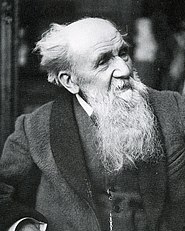
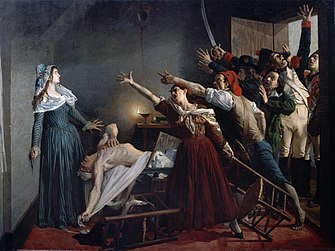
Jean-Joseph Weerts (1 May 1846, Roubaix - 28 September 1927, Paris) was a French painter of Belgian origin who worked in the Academic style.


Jean-Joseph Weerts (1 May 1846, Roubaix - 28 September 1927, Paris) was a French painter of Belgian origin who worked in the Academic style.
His father was a mechanical engineer who gave him his first introduction to drawing. Later, in 1858, he attended the Académie des Beaux-arts de Roubaix. With a pension (stipend) from Roubaix, he enrolled at the École des Beaux-arts in 1867, working in the studios of Alexandre Cabanel.
He produced nearly 700 works, including portraits and paintings on historical and religious themes. The Death of Bara earned him the Légion d'honneur in 1884. [1] He also decorated a number of public buildings throughout France and participated in several official projects for the Third Republic, including the Hôtel de Ville, the Sorbonne and the Hôtel des Monnaies. He also worked at the Limoges City Hall and the College of Medicine in Lyon.
He was buried at Père-Lachaise, [2] and a street in Roubaix was named after him. A monument in his honor was created by the sculptor Alexandre Descatoire and may be seen in Roubaix's Parc Barbieux. [3]

Jean-Baptiste Regnault was a French painter.

Jean Alexandre Joseph Falguière was a French sculptor and painter.

Louis-Ernest Barrias was a French sculptor of the Beaux-Arts school. In 1865 Barrias won the Prix de Rome for study at the French Academy in Rome.
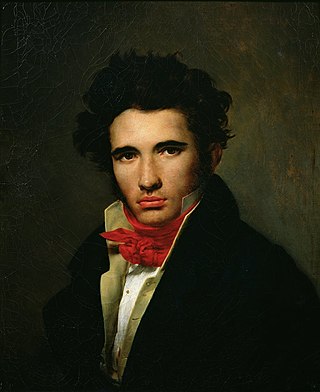
Léon Cogniet was a French history and portrait painter. He is probably best remembered as a teacher, with more than one hundred notable students.
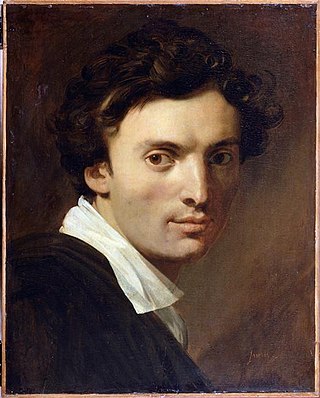
Jean-Pierre Cortot was a French neoclassical sculptor.

Pierre-Jean David was a French sculptor, medalist and active freemason. He adopted the name David d'Angers, following his entry into the studio of the painter Jacques-Louis David in 1809 as a way of both expressing his patrimony and distinguishing himself from the master painter.

Jean-Joseph Marie Carriès was a French sculptor, ceramist, and miniaturist. His ceramic work is mostly in stoneware, and part of the French art pottery movement, and includes many faces and heads, often with grotesque expressions, but he made several conventional pots, often with thick unctuous ash glaze effects in the Japanese style.
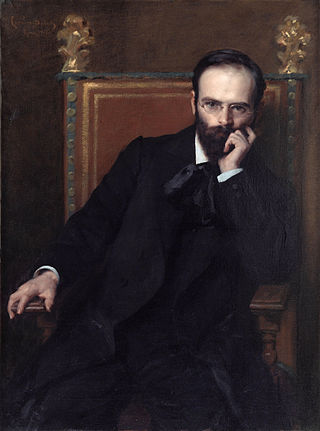
Henri Bouchard, was a French sculptor. His work was part of the sculpture event in the art competition at the 1924 Summer Olympics.

The Hôtel de Toulouse, former Hôtel de La Vrillière is located at 1 rue de La Vrillière, in the 1st arrondissement of Paris. Originally, the mansion had a large garden with a formal parterre to the southwest.
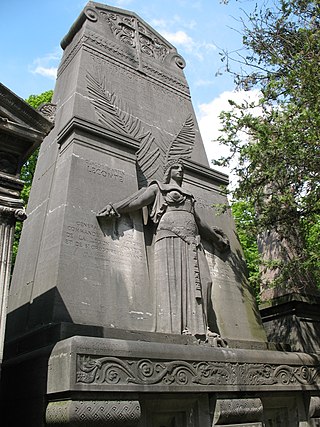
Louis-Léon Cugnot was a French sculptor.

Émile Nestor Joseph Carlier, called Joseph Carlier, was a French sculptor.
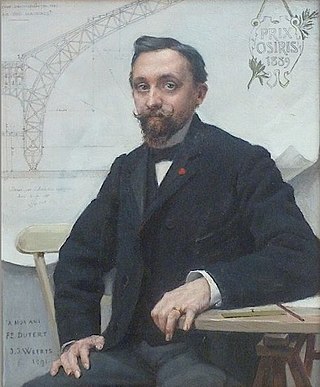
Charles Louis Ferdinand Dutert was a French architect.

Charles Alexandre Bertier was a French landscape painter.

Guillaume Édouard Marie Dubufe was a French painter, decorator and illustrator.
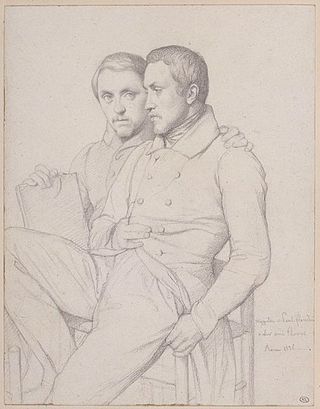
Paul Jean Flandrin was a French painter. He was the younger brother of the painters Auguste Flandrin and Hippolyte Flandrin.
Hubert Yencesse was born in Paris on 28 April 1900, and died in Dijon, Paris on 4 October 1987. He was a known French sculptor. He secured 3rd place in the Art Olympics of the year 1948 for his sculpture Swimmer. His first exhibition was in the year 1921 at the Salon d'Automne, and in the year 1934 he received the Blumenthal prize.
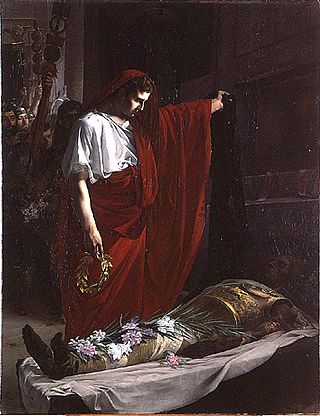
François Schommer was a French painter, watercolorist and decorative artist.
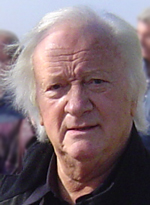
Michel Degand was a French painter, sculptor, cartoonist, and graphic artist.

Simone Boisecq was a French sculptor who worked in Algiers and Paris. Her work has been described as a synthesis between abstraction and figuration.